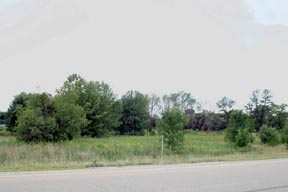Emerald Ash Borer Update | |
|---|---|
| July 17, 2007 | |
|
Emerald ash borer has recently been found in the Batavia industrial park at the eastern edge of Kane County, at Fermilab in western DuPage County, and at an intersection of I-80 in Peru in western LaSalle County. These join the find earlier this spring in Skokie as new locations for this pest this year. Other finds this year have consisted of additional infested trees being found in areas of Kane County and northeastern Cook County known to be infested. All of the infestations appear to have been present for at least 3 to 5 years. Both the Fermilab and Peru finds represent ones in new counties outside of current state quarantine areas. These will trigger the designation of new quarantine areas in the next few weeks. All known locations of this pest are in northern Illinois.  The Peru infestation at an Interstate intersection raises the likelihood that this beetle is riding to new locations on commercial and personal vehicles. Both the Illinois Department of Agriculture and USDA–APHIS personnel have been inspecting areas of this type for an extended period. They have also been concentrating on firewood. as well as conducting systematic surveys of trees. The Illinois Department of Natural Resources has been watching campgrounds and other state park areas for this pest. Firewood is still thought to be the most likely mechanism for the transport of emerald ash borer to new locations and will continue to be the focus of public awareness campaigns. Previous firewood-awareness campaigns have intensified prior to and during the Memorial Day and Fourth of July holidays, and another is being planned for the Labor Day holiday. Adult emerald ash borers are present at this time but appear to be lower in number than expected. Many dead larvae were found in sampled trees this spring, which may account for the apparent lower beetle emergence. It is possible that the cold weather snap this spring, cold weather during the winter, or disease pathogens may be the cause of this larval mortality. Considering that this insect does very well throughout the lower peninsula of Michigan, it is unlikely that low winter temperatures would greatly impact this pest. The possibility of an important disease pathogen is being studied more closely. Currently, many of the emerald ash borers that are being found are mature larvae. This insect commonly has a 2-year life cycle; and it is likely that a 2-year life cycle is normal, based on research conducted in Michigan. It is also thought there may be an extended emergence, with additional beetles emerging later in the summer into early fall. The mature larvae that are being found now may pupate and emerge later in this growing season or move deeper into the wood to spend the winter as pupae and emerge next year. |